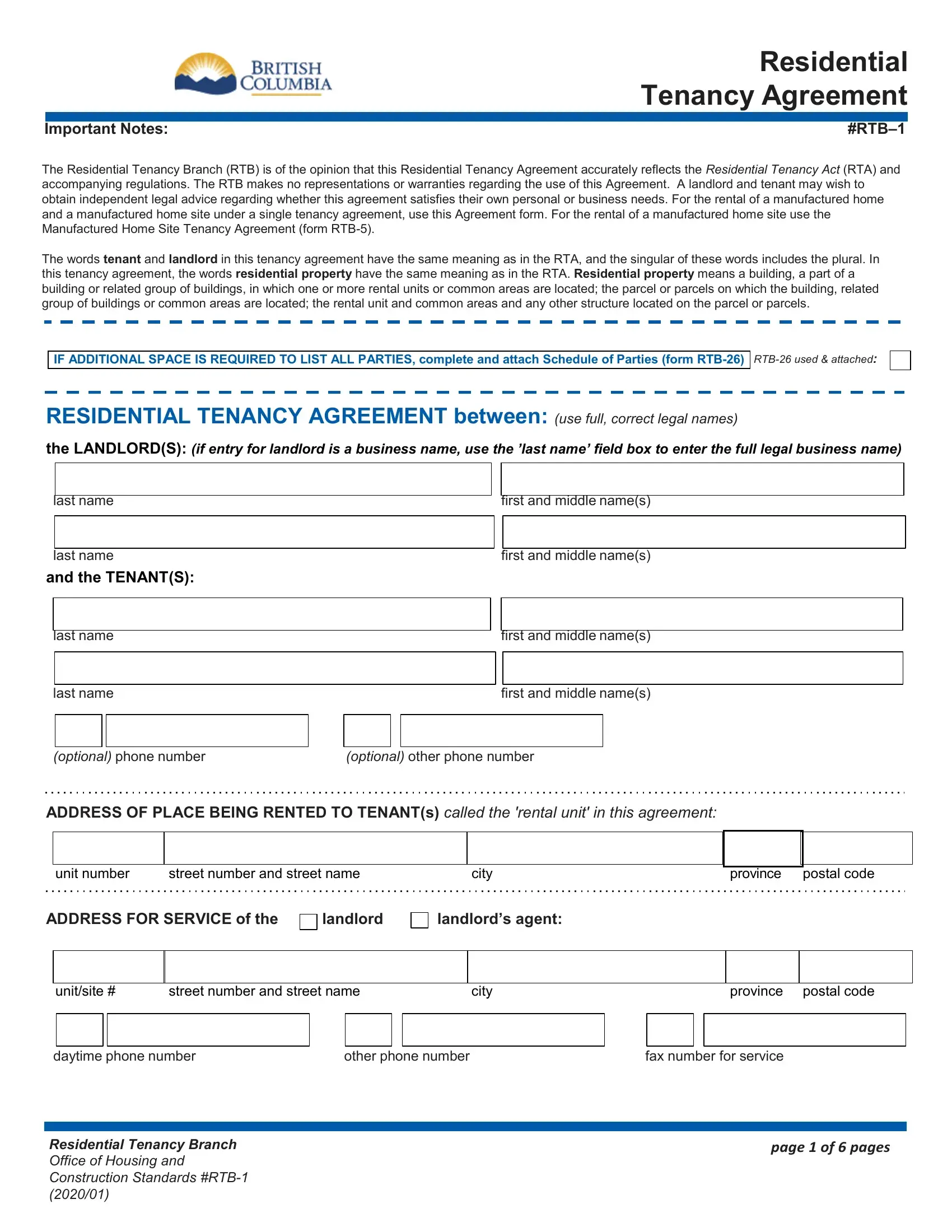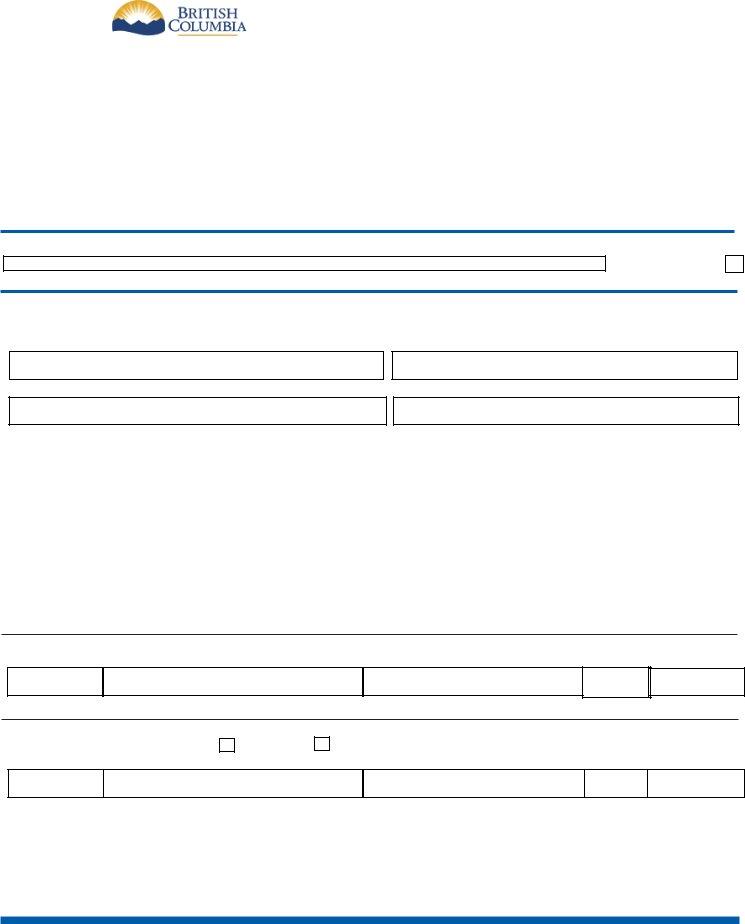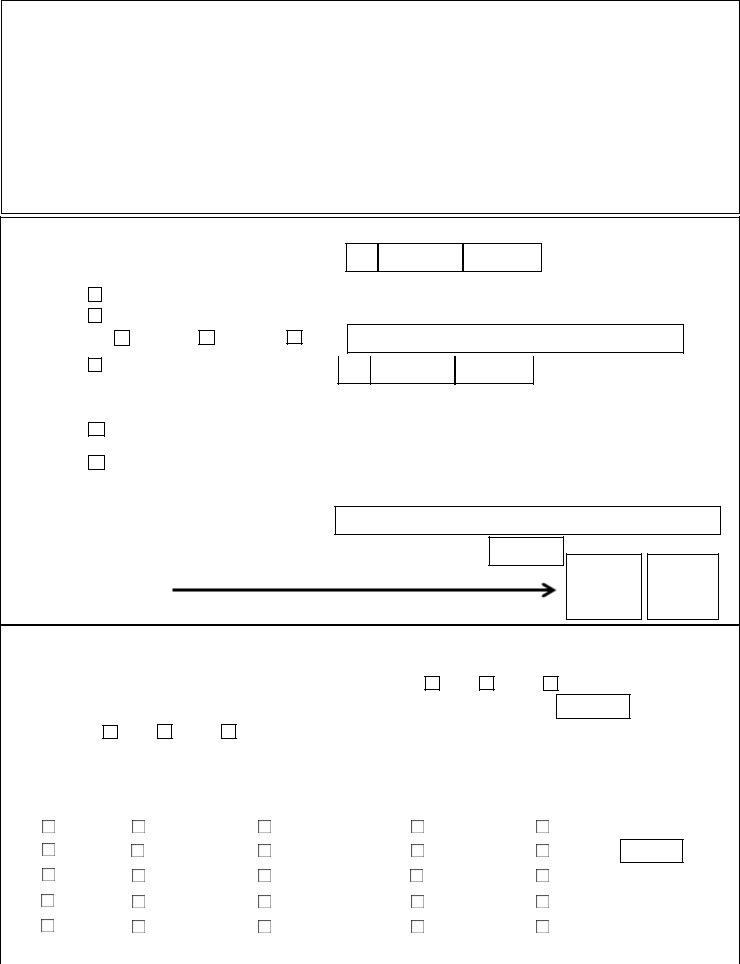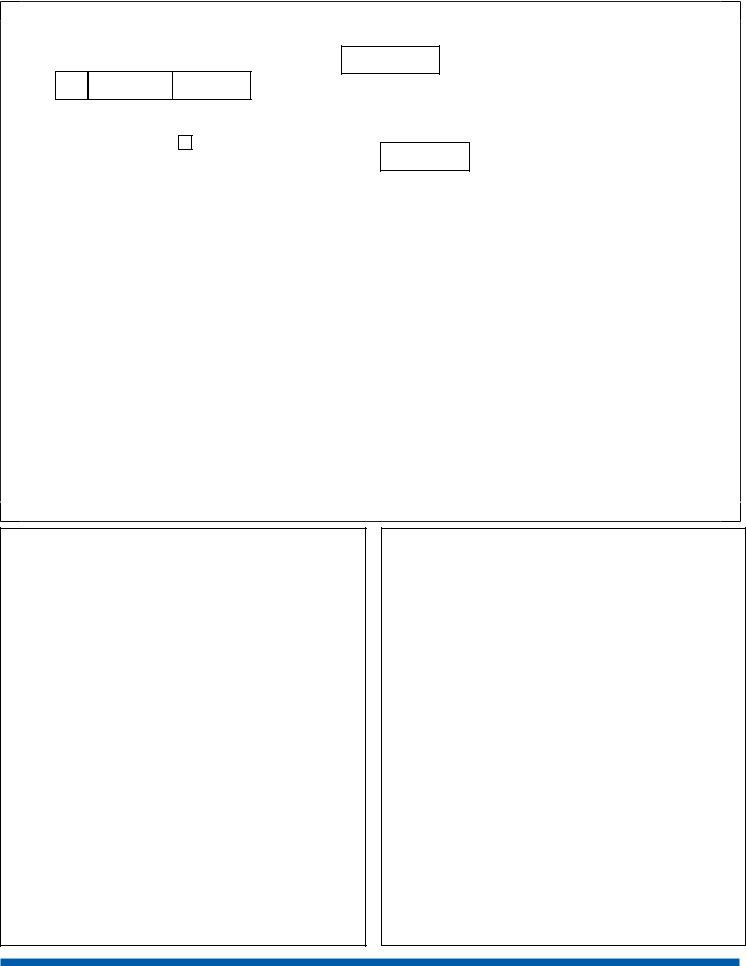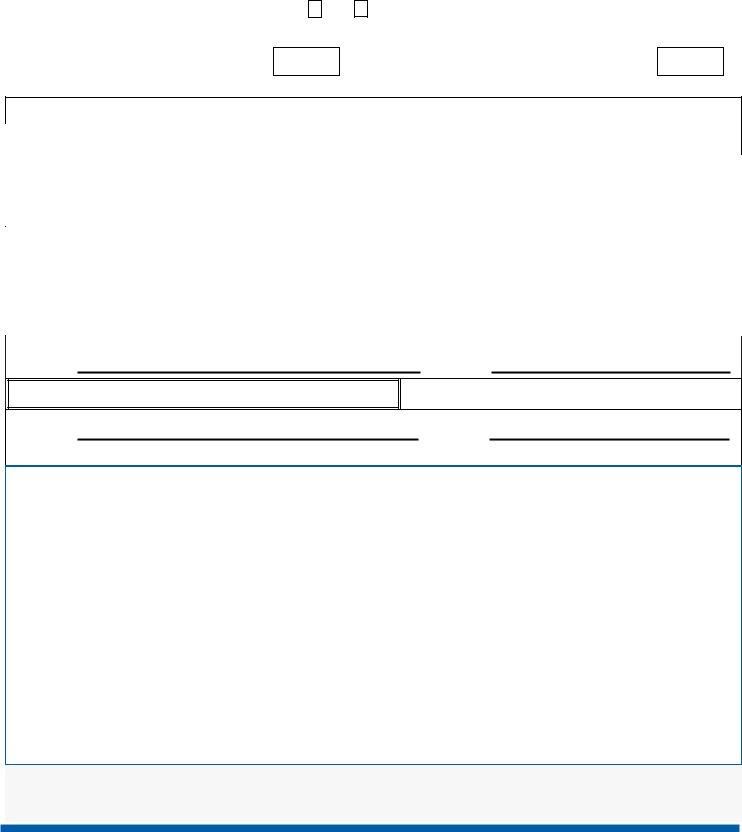Working with PDF files online is always quite easy using our PDF editor. Anyone can fill out bc tenancy agreement here effortlessly. In order to make our editor better and easier to utilize, we continuously work on new features, with our users' feedback in mind. If you're seeking to start, here's what it's going to take:
Step 1: First, open the pdf tool by clicking the "Get Form Button" at the top of this webpage.
Step 2: After you start the online editor, you'll see the document prepared to be filled out. Apart from filling out various blanks, you may also perform many other actions with the form, including putting on custom textual content, changing the initial textual content, adding illustrations or photos, signing the PDF, and more.
With regards to the fields of this specific document, here's what you should do:
1. While filling in the bc tenancy agreement, ensure to include all needed fields in its relevant section. This will help speed up the work, allowing for your information to be processed promptly and accurately.
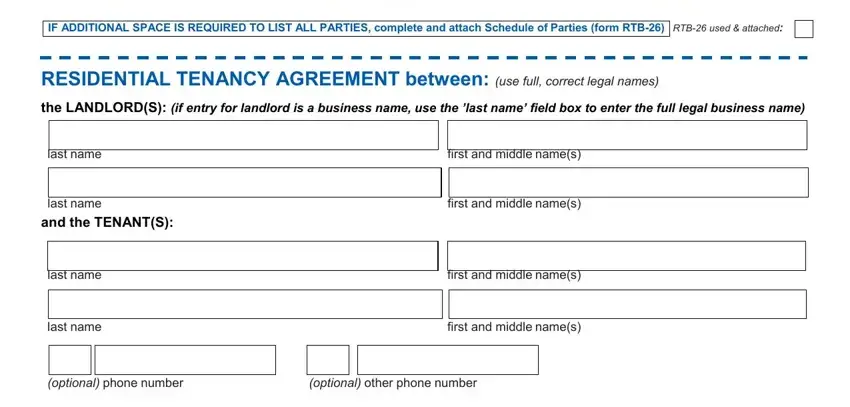
2. Immediately after this section is completed, proceed to enter the suitable information in all these - ADDRESS OF PLACE BEING RENTED TO, unit number, street number and street name, city, province, postal code, ADDRESS FOR SERVICE of the, landlord, landlords agent, unitsite, street number and street name, city, province, postal code, and daytime phone number.
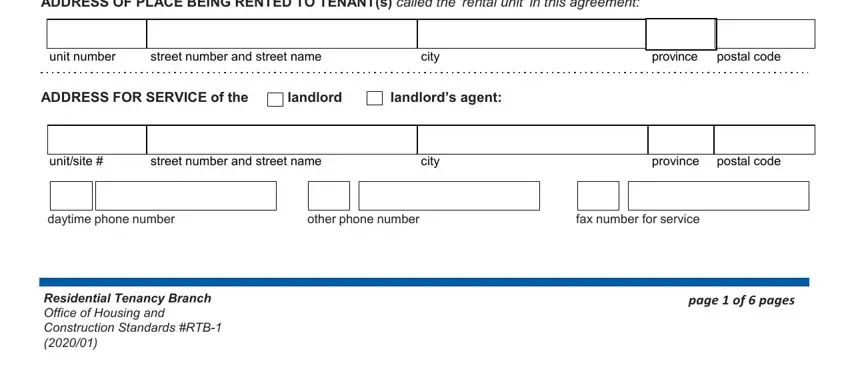
3. This next section will be focused on BEGINNING AND TERM OF THE, This tenancy created by this, Check A B or C, A and continues on a monthtomonth, day month, year, B and continues on another, weekly, biweekly, other, C and is for a fixed term ending on, day month, year, IF YOU CHOOSE C CHECK AND COMPLETE, and D At the end of this time the - type in every one of these blank fields.
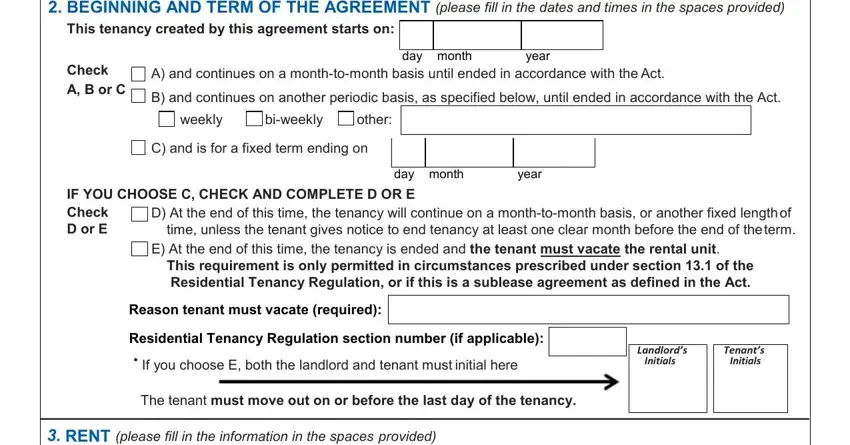
4. This next section requires some additional information. Ensure you complete all the necessary fields - RENT please fill in the, a Payment of Rent, The tenant will pay the rent of, each, check one, day, week, month to the landlord on, the first day of the rental period, day of each, day, check one The tenant must pay the, month subject to rent increases, week, and b What is included in the rent - to proceed further in your process!
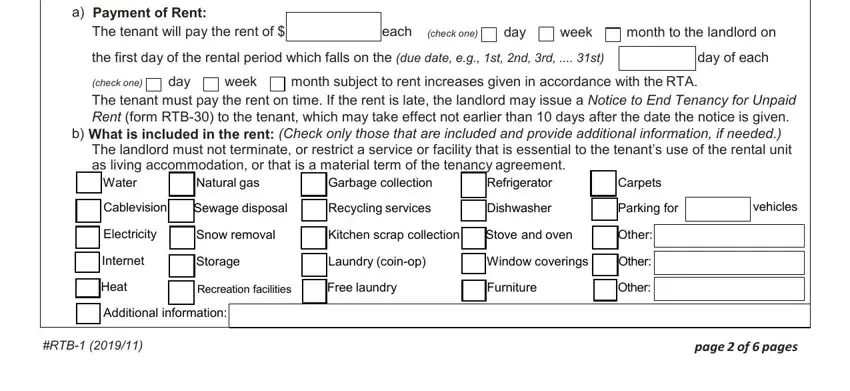
5. This form needs to be wrapped up by dealing with this section. Further you will find a comprehensive listing of blank fields that need accurate information to allow your document usage to be accomplished: A Security Deposits, The tenant is required to pay a, day month, year, B Pet Damage Deposit, not applicable, The tenant is required to pay a, day month, year, The landlord agrees, a that the security deposit and, for the residential property, b to keep the security deposit and, with the regulation and, and c to repay the security deposit.
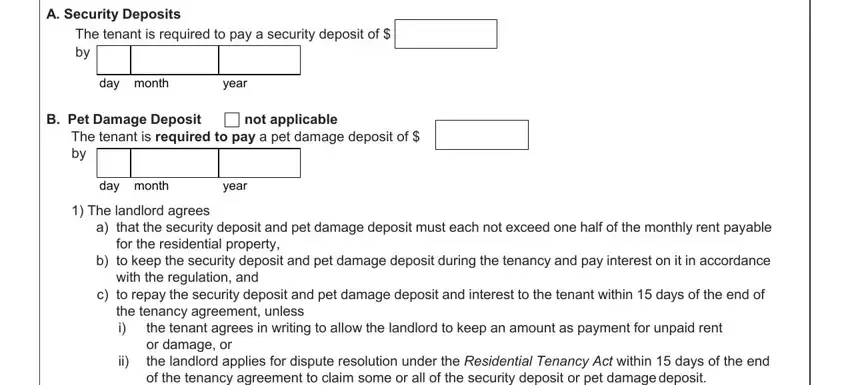
It is easy to make a mistake when completing your The tenant is required to pay a, for that reason make sure you go through it again before you decide to finalize the form.
Step 3: After you have glanced through the details in the document, just click "Done" to complete your form at FormsPal. Make a free trial account at FormsPal and gain direct access to bc tenancy agreement - readily available from your FormsPal account. FormsPal is invested in the confidentiality of all our users; we ensure that all personal information processed by our tool remains protected.
